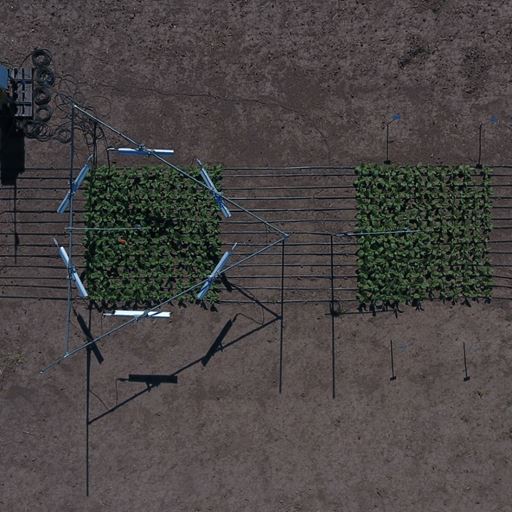Researchers help protect crop performance in higher temperatures
-
Date
Wed 15 Dec 21

An international research project involving the University of Essex has found a way of protecting crop performance in the face of rising global temperatures.
The world is warming quickly with no indication of slowing down and this could be catastrophic for the production of food crops, particularly in already warm areas.
However, new research led by University of Illinois and the US Department of Agriculture Agricultural Research Service shows that bypassing a photosynthetic glitch common to crops like soybean, rice, and wheat, can provide thermal protection under heat stress in the field.
Dr Amanda Cavanagh, from Essex’s School of Life Sciences, who led the research said: “We need to double crop production by 2050 to feed a growing global population, and not only are we not on track to do that, but climate change is further complicating things.”
The research project, published in the Plant Biotechnology Journal, engineered plants which produced 26% more yield than the wild-type plants exposed to the same heated conditions. The engineered plants also had 15% less yield loss under the higher temperatures than non-engineered plants. This gave the researchers insight into how to improve the yields of food crops in the changing climate.
“As a plant scientist, producing enough food to feed the predicted mid-century population of nine billion with the pace of sustained increases in atmospheric carbon dioxide is the defining challenge of our career,” said Dr Cavanagh. “There’s no greater motivation to do your best at work so you’re providing solutions to adapt to a world that’s outpacing a plants’ ability to adapt to it.”
Photosynthesis, the natural process plants use to convert sunlight into energy and food, relies on the enzyme Rubisco to turn carbon dioxide into sugars. However, photosynthesis produces an oxygen-rich atmosphere and about 20% of the time, Rubisco grabs oxygen instead of carbon dioxide, resulting in a process called photorespiration which can reduce yield of a grain like wheat by about 36%. This lost production is equal to 148 trillion calories in wheat and soybean, calories that could be feeding millions of people.
Dr Cavanagh, who is also an affiliate faculty with the Carl R. Woese Institute for Genomic Biology, added: “We know that as temperatures rise, Rubisco has a harder time distinguishing between carbon dioxide and oxygen, and so rates of photorespiration rise. Because of this, we thought manipulating photorespiration might be a way to help crops take the heat and mitigate yield losses caused by higher temperatures.”
From an economic standpoint, the yield loss, reportedly as high as 40-50% in the southern United States, cost producers around $500 million in 2012. Producers in regions around the equator can see even more losses, due to the increased temperature, with the issue expected to escalate worldwide due to climate change.
This research is part of Realizing Increased Photosynthetic Efficiency (RIPE), an international research project that aims to increase global food production by developing food crops that turn the sun’s energy into food more efficiently with support from the Bill & Melinda Gates Foundation, Foundation for Food & Agriculture Research, and UK Foreign, Commonwealth & Development Office.
Now the concept has been proven in tobacco plants, research is underway to take the same genetics and put it into food crops like potatoes and soybeans, allowing food production to increase, despite the ever-increasing temperatures around the world.
.jpg?mh=500&mw=500&hash=6568B6C9CCF5290A596BEF6678B6AD0E)



